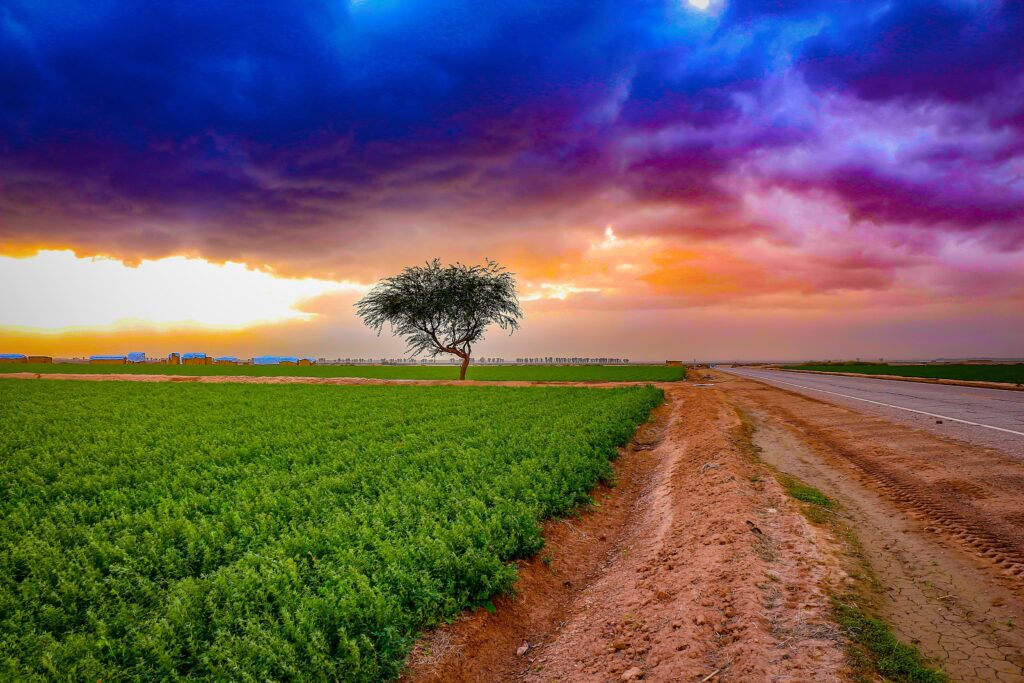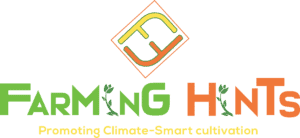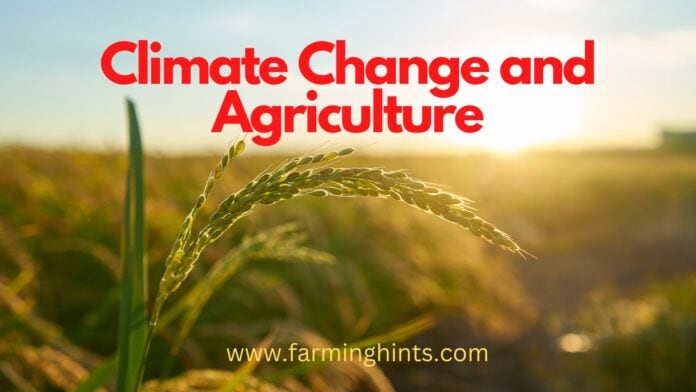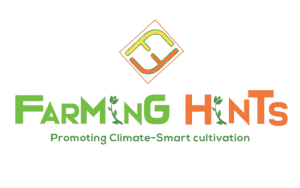Climate change or change in climatic patterns is a natural process, but natural climate change is very slow and gradual especially when we debate climate change and agriculture collectively. But climate change which we are facing is due to human activities. These activities increased in the period of 1800s to onward. Agriculture practices or raising crops in particular areas required specific weather conditions and temperatures in different stages of their growth period. Climate change has changed the conditions suitable for that crop or in its growing period.
Climate Change and Agriculture
Our climate is heating up daily, and the impact is growing rapidly and severely. Climate change is a great challenge for farmer communities all over the world.
Our agriculture sector relies on industrial products like artificial fertilizers and pesticides. These things are destroying soil structure and reducing biodiversity. That is an alarming situation. Study shows that an increase in temperature may increase the crop yield of some crops in a particular region. But these changes can be a threat in the form of floods and droughts that can disrupt the food chain.
As a result of climate change, there will be low production of food and high price. It means that there is not sufficient food for every person. Water availability can also be affected due to droughts. So fewer green plants and crops can lead the weather toward extreme conditions.
A vulnerable industrial system and advancing climate change is a “perfect storm” that threatens agriculture sectors and people related to the sector and our food supply. But there are some tools in smart and science-based farming techniques that can buffer the agriculture sector from climate damage and can help to make agriculture more resilient and sustainable. But it is challenging for farmers to change their conventional farming practice. Govt. should invest in adopting modern techniques.
Causes of Climate Change in Agriculture
Greenhouse gas region that traps heat in it due to the presence of some material act like a greenhouse. Around the globe, such materials can absorb heat and act like greenhouse walls. These things are
- Carbon Dioxide
- Methane
- Water vapors
- Clorofloro carbons
- Nitrous oxide
Carbon Dioxide is the main cause of global warming. It has many sources, which are human activities, but it is also produced naturally. Other greenhouse gases are present in smaller quantities. Methane has shorter life otherwise, it is more power full greenhouse gas. Nitrous oxide has a longer life greenhouse gas and remains in the atmosphere over decades.
All molecules of this matter absorb heat. They do not allow to escape the trapped heat out of the atmosphere and act like a greenhouse. In this way, the climate gets warm, which is a reason for climate change.
Global Warming
As the heat does not go out of our atmosphere, these phenomena raise the earth’s temperature yearly. The globe is going to warmer every day which is called global warming.
Deforestation
Deforestation/cutting down trees releases CO2, which they absorb in their life cycle, which is an adverse effect.
Fluorinated Gases
Fluorinated gases are produced from those things in which these are used and affect the atmosphere.

How climate change is affecting our Agriculture?
When agriculture is affected, it leads the disturbance in the food web. As a result, food scarcity has been faced by humanity. Developing countries especially face these problems.
-
Floods
Floods have an impact on climate change. We are observing this phenomenon in the present age. Many countries have been facing these natural disasters since global warming reached its peak. This global warming increases temperature, which is a cause of the melting of icecaps and glaciers. As a result, sea level and river water rise, and all coastal areas go under the water. This is a situation of flooding. This natural disaster can increase poverty at the individual level as well as the country level. When a flood destroys agriculture in a particular area, the survival of life is difficult because of disturbance in the food chain.
-
Longer Droughts and Intensive Rainfall
Changes in precipitation patterns have already begun worldwide, and such changes are expected to become more severe over the coming years. It means that a region will have longer dry periods and intense periods of heavy rain. That is not suitable for the agricultural practices of the particular region.
-
Temperature Change
In normal conditions, a gradual change in temperature according to the seasons is necessary for the crops sown in a particular area. Still, climate change affects these changing temperature patterns, which has an adverse effect on the crops. Generally, climate change gave a rise in average temperature. But it also has produced extreme events in summer and winter season some days in summer are too hot and on the other hand in some winter days temperature falls at an extreme level. Both these conditions are not suitable for all the crops of that time.
-
Droughts
Climate change can also lead to droughts. Water shortages damage as too much water can. No water means no agriculture which means no plants. That means no food chain and no abstraction for climate change. A rise in temperature can cause such droughts by depleting the water table under and above the surface, and in some areas, it can be destructive for wildlife and crops.
-
Selection of New Crop Varieties and Animal Breeding
An area farmer always selects those crop varieties for whom local climate condition is suitable. This is also a strategy for the selection of animal breeds. So rapid climate change has compelled farmers to think about their selection of crops and animal realities. These new breeds and new varieties will demand a different knowledge level. It may increase the cost.
-
New Problems
The selection of new varieties will generate these problems with new pests, pathogens, and weeds. The farmer will have to tackle the new problems and diseases of crops and animals. The monoculture cropping system must be changed. Because it takes the same types of nutrients every time from the soil. It also does not develop organic matter in the soil. Soil having less organic matter will also have less crop density and contribute to floods or droughts.
Climate impacts increase soil erosion and give rise to pest problems. What is the reason a field requires more artificial fertilizer and pesticides? Due to the high demand for these things, their prices also increase, and they go out of the reach of small farmers.
-
Unworkable field conditions
As summer is hotter than the previous ones, the temperature rise is not suitable for working farmers and field workers, so people do not like to work on such hot days. These conditions are not only in the summer but the same for winter because some days are too cold that a person falls ill if they work in such cold weather. So these extreme conditions are very unsafe for working in a farm field.
Solutions for Climate Change
As discussed, climate change can never be stopped, but different techniques can slow it down. Its effects can be minimized on agriculture by these strategies:
-
- Stop deforestation practices. Trees take part in maintaining the climate condition of any area.
- Recognise the new agricultural techniques that consider less effect of climate change.
- A system of safe and sufficient food for everyone introduced by research laboratories and universities throughout the world. Climate-friendly agriculture practices should be researched and adopted.
- No-till farming is also a new technique and is climate-friendly. It can give sustainable agriculture to the world.
- Emission of those factors that accelerate climate change must be reduced and, if possible, prohibited.
Climate is the most important factor influencing agriculture production. Because of the size and sensitivity of the agricultural sector, the world’s largest economic effect of climate change is in agriculture. Warming has the greatest impact on agricultural production in developing countries. The overall opinion is that temperature and precipitation changes will change land and water regimes, affecting agriculture production. Farm owners and farm communities worldwide will increasingly face challenges as our climate is continuously warming and the impacts of that warming are becoming more frequent and severe.
World Wide impact of Climate change
Worldwide climate change refers to shifts in the long-term patterns of weather that categorize the world’s regions. It focuses on non-normal climatic changes and the impacts of these changes on various parts of the Earth. These changes might take tens, hundreds, or perhaps even years to occur. However, increased human activities such as industrialization, agriculture, deforestation, changes in land use patterns, and urbanization result in the emission of greenhouse gases, which accelerates the pace of climate change. It creates a fairly warm and friendly environment near the surface of the earth that has allowed humans and others to grow and flourish. However, increased concentrations of greenhouse gases methane, carbon dioxide, nitrous oxide, water vapor, sulfur hexafluoride, hydrofluorocarbons, and perfluorocarbons used by anthropogenic activities have made a significant contribution to an exponential rise in the temperature of the earth, resulting in global warming.
A rise in the seasonal temperature can shorten the growing season of many crops, significantly lowering yield. Overall, agriculture production worldwide is expected to fall by 3 to 16% by the year 2080.
In developing countries, the majority of which have average levels of income, temperatures that are already close to or exceed levels of crop tolerance are expected to decline by 10 to 25% on average by the year 2080.
Climate change has an impact on food security both intrinsically and extrinsically. Any change in the climatic variables that control crop growth, like temperature and humidity, has a direct impact on the quantity of produced food. Indirect connection refers to major disasters like floods and drought, which are expected to increase as a result of climate change, resulting in massive crop loss and rendering vast areas of agricultural land unfit for crop production, and can result in food insecurity. Globally, increasingly unstable weather patterns will reduce agricultural production and raise food prices, resulting in food insecurity.

Conclusion
Climate change is a natural process that continues every time. Climate change has adverse effects not only on living things but also on the whole planet earth. It can change the shape of the globe. It is increasing the water area daily by capturing coastal regions in the sea. Climate change and agriculture very closely relate to each other. Climate change can change agriculture’s scenario.
There is a need to cope with the issues of climate change. For this,
we need to provide farmers with weather services that help them to deal with climatic risks. Farmers can respond to climate change by trying to select varieties with different growth DURATION’S, shift planting dates, and change cropping systems. An early detection system for disease and pest epidemics should be implemented.
There is a need to give rewards to farmers for the conservation of resources. Adaptation to new technologies can play a key role in the mitigation of climate. The provision of technical, financial, and institutional assistance for the establishment of community food banks, silage, and seed will help to cope with the emerging issues of climate change.
Humans can also slow it down by taking care of their environment. The climate change process is thrust by more carbon dioxide in the environment. We can get a safe future by acting on the strategies that can slow down the effect of clime change on agriculture. Adopting integrated climate-smart agriculture is the key solution to cope with climate change.






